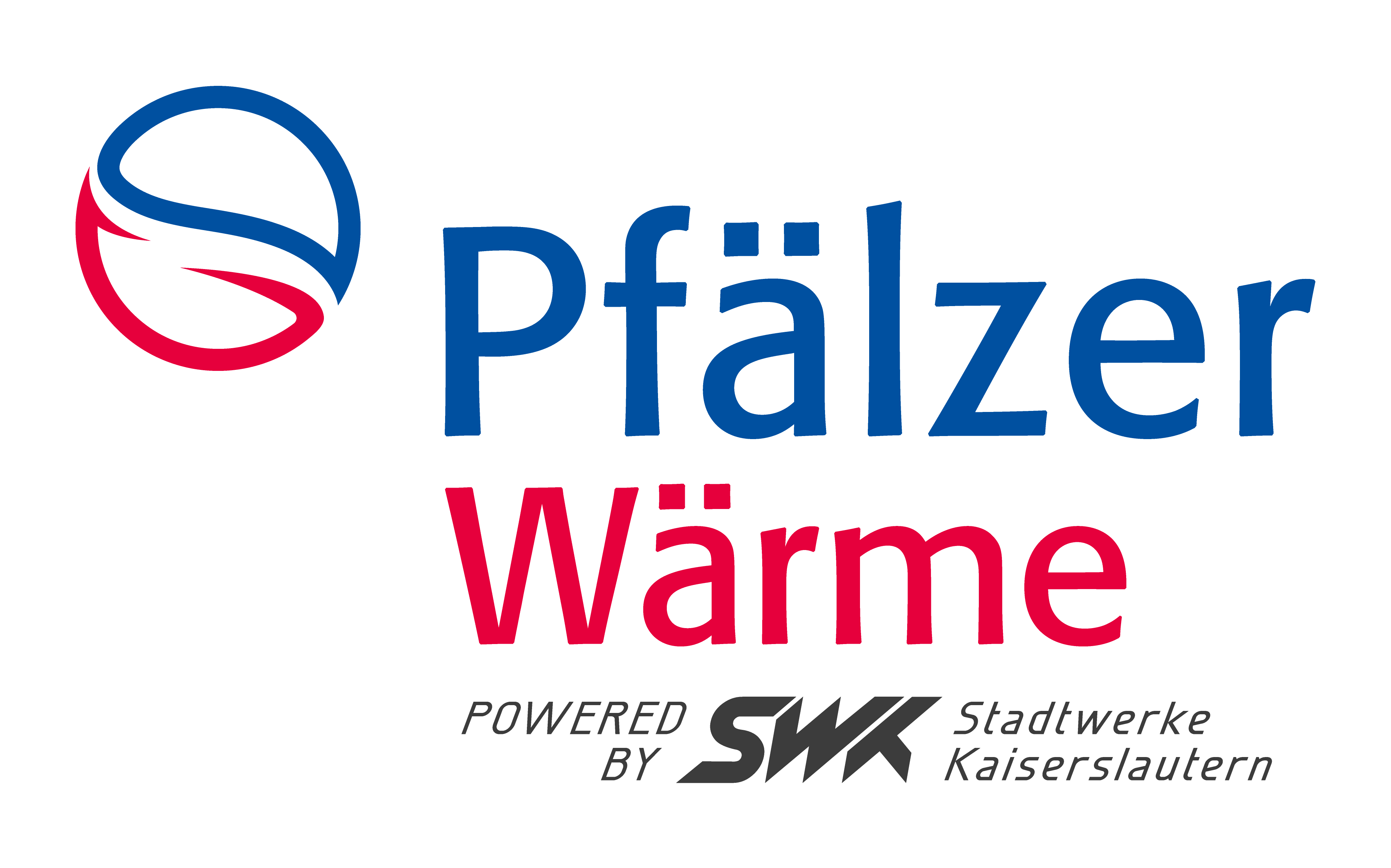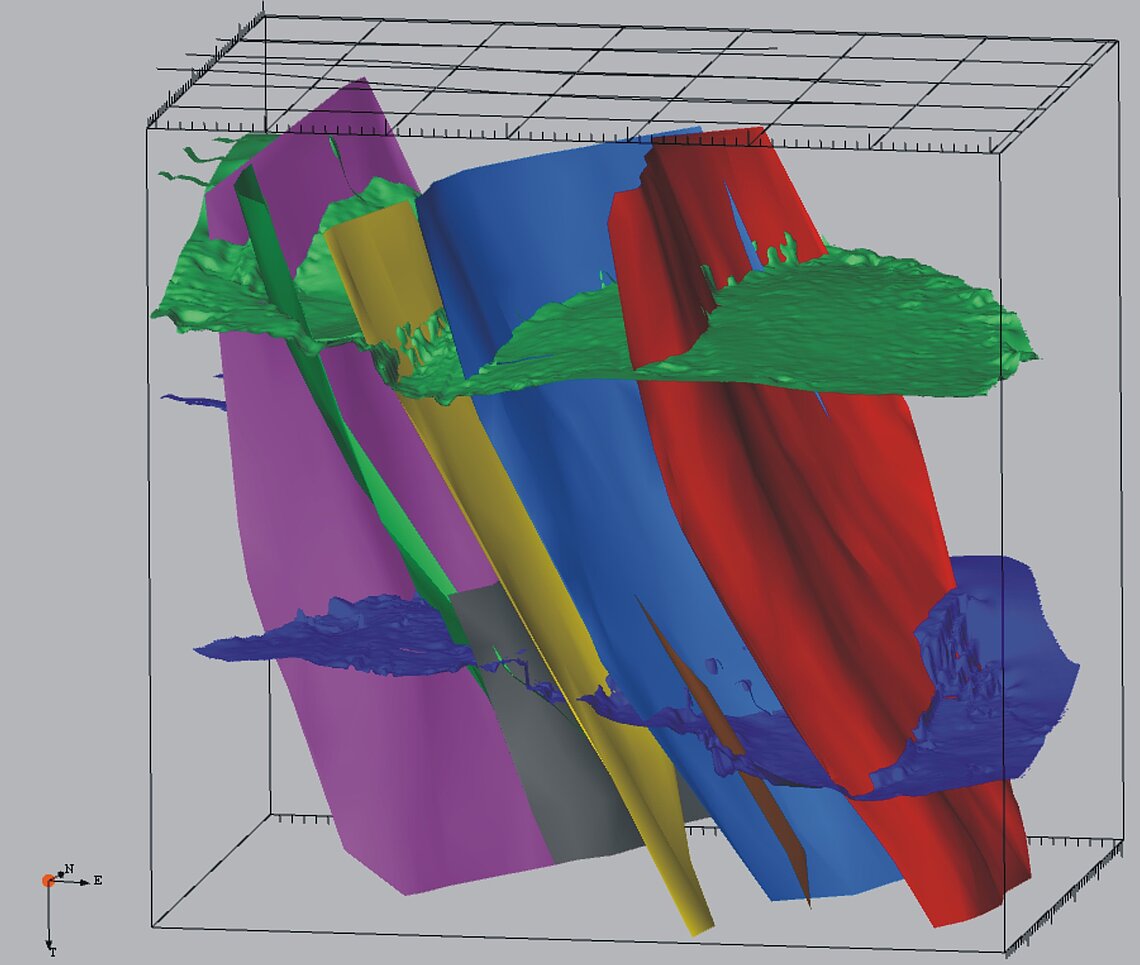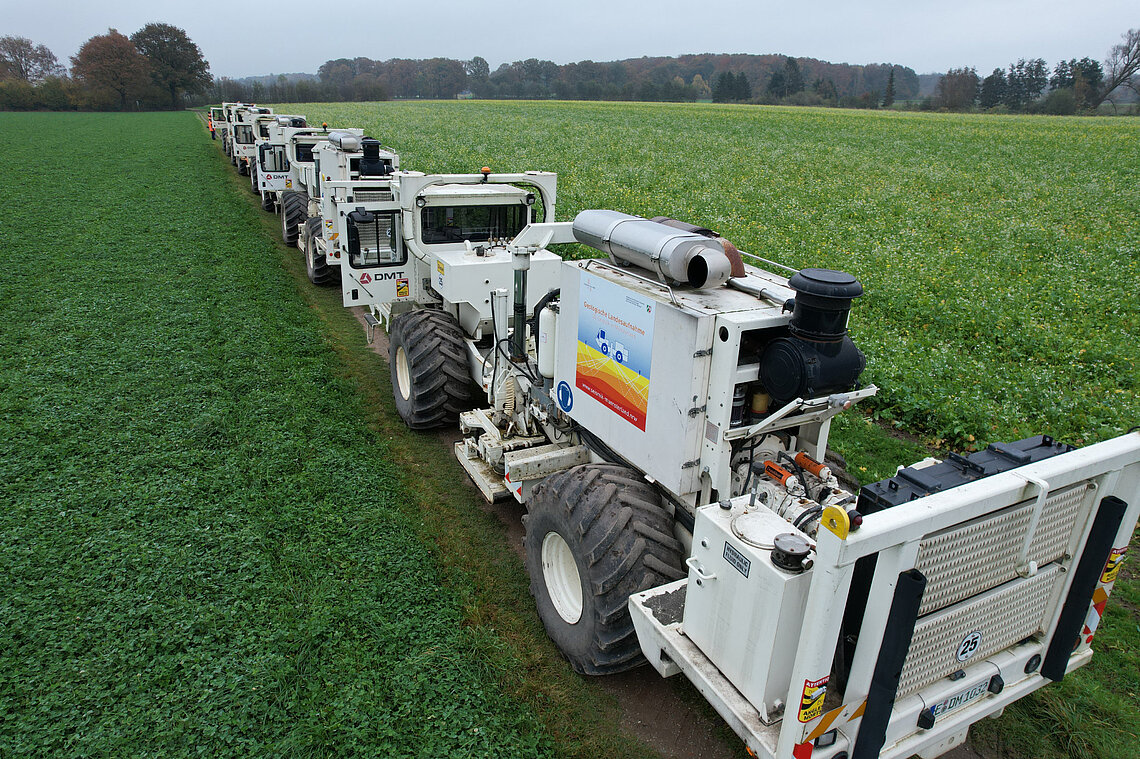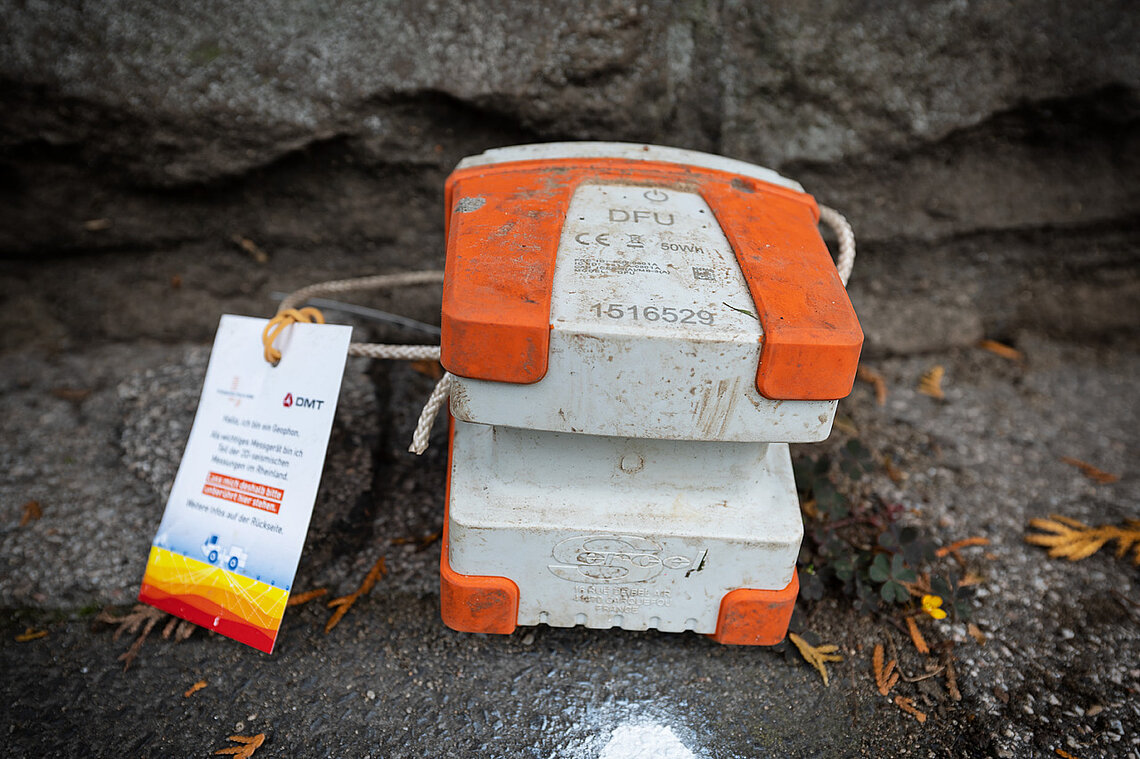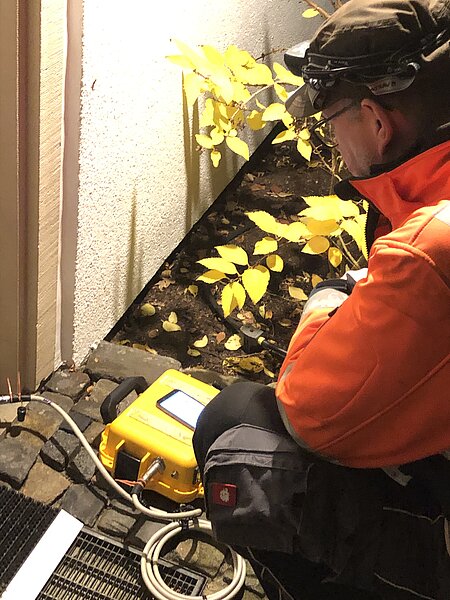3D seismic exploration
As part of the investigation in the “Lutrina” exploration area, 3D seismic is being used. This technique, similar to ultrasound measurement, can be used to create an image of the subsurface that shows the boundaries of rock layers and fracture zones. The data obtained can be combined with knowledge from boreholes, for example, and evaluated to create a three-dimensional representation. In addition to a general gain in knowledge, the results can be used to identify potential future drilling targets.
For the seismic exploration, so-called vibro-trucks are used, which move in convoy along a pre-planned grid:
The seismic trucks
- 3 to 5 vibro-trucks, each weighing 20-30 tons
- Stop every 20-40 meters
- At each stop: vibrate 2-4 times for approx. 10-100 seconds
The vibro-trucks are equipped with metal vibrating plates, which are lowered to the ground at each stop to generate vibrations. The sound waves travel through the subsoil and are reflected along the boundaries of the rock formations and fracture zones. Geophones on the surface record the reflected signals.
The geophones
Geophones are highly sensitive measuring devices, roughly the size of a loaf of bread. They are distributed along a grid in the measurement area to record the reflected signals sent by the vibro-trucks into the ground. These are converted into analogue signals within the geophone and stored. Once the measurements have been completed, the geophones are retrieved, the data read out, and analyzed by experts.
If you see geophones, please leave them where they are. Each individual measuring device is an important source of data for later analysis. If you find geophones in unusual places, please let us know via lutrina@ips-celle.de.
Influence on the environment
Although the 3D seismic exploration is a gentle process, it does have an impact on the immediate surroundings. For example, due to the slow speed of the convoy, there may be traffic restrictions comparable to those caused by a moving construction site. Despite the soundproofing of the vibro-trucks and conformity with all applicable guidelines, residents living along the measurement route will also experience significant noise pollution for about one to two hours.
Although the vibrations are directed towards the ground, they can also be felt in the immediate surrounding of the seismic trucks. The feeling is comparable to a tingling sensation under your feet, as you would experience on a passing streetcar, for example. To prevent damage to the local infrastructure, such as roads or buildings, the vibrations are kept below a specified upper limit. The DIN 4150 standard for vibrations in buildings defines how the effects of vibrations on buildings should be measured and assessed. Normally, damage to buildings can be ruled out for vibration velocities of up to five millimeters per second. Compliance with the guideline values is monitored with separate measurements directly at the adjacent buildings. Should damage nevertheless occur, the so-called reversal of evidence according to the Federal Mining Act applies. This means, the measuring company or we, Stadtwerke Kaiserslautern, as their client, must prove that the damage was NOT caused by us.
